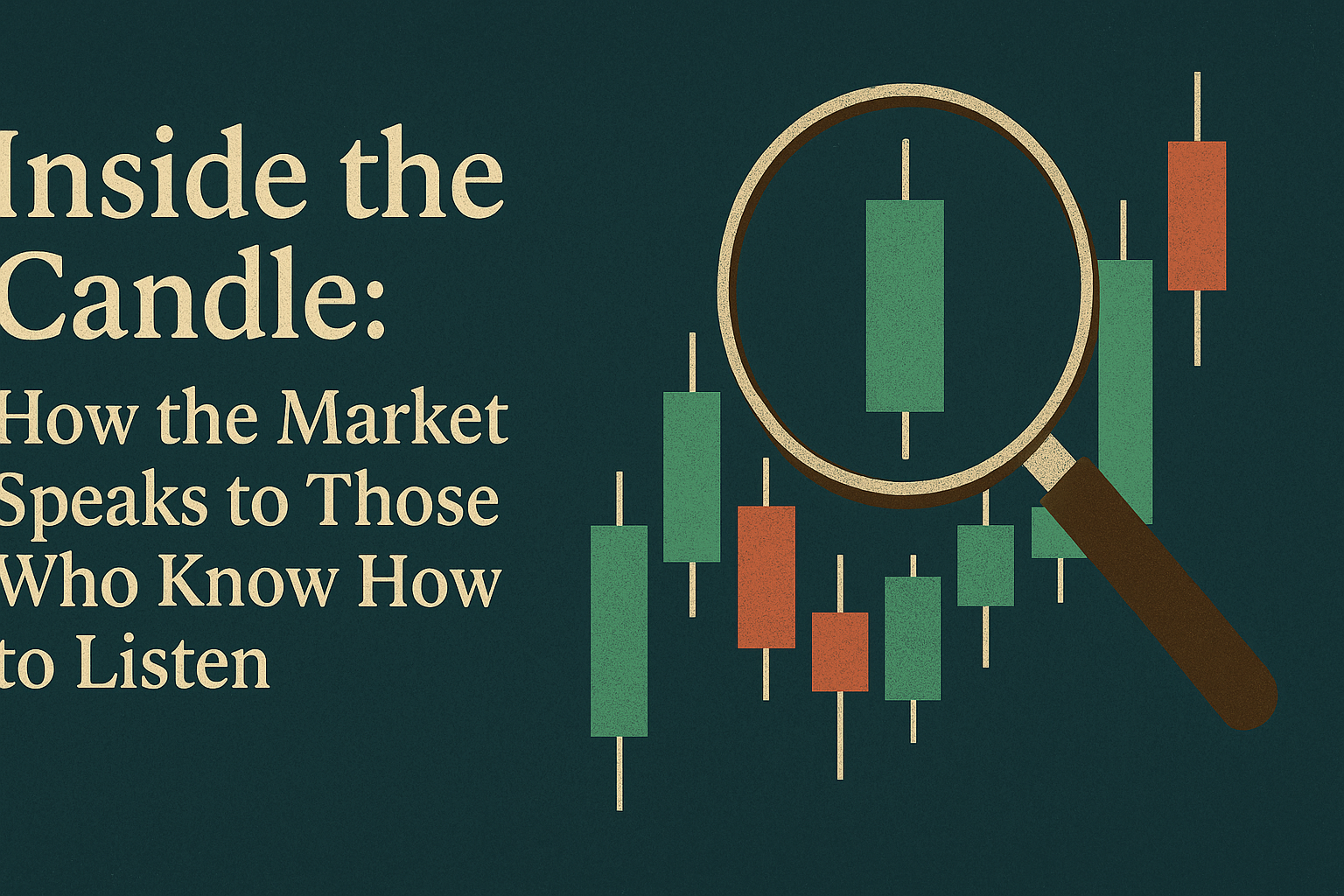Reading Between the Candles: What the Chart Is Really Saying

Inside the Candle: How the Market Speaks to Those Who Know How to Listen
Most traders approach the market like a battlefield—with strategies, indicators, and tightly clenched fists. They scan charts hunting for confirmation, waiting for the perfect signal. But the market rarely grants certainty. It whispers. It hints. It reveals itself only to those who stop demanding answers and start learning to listen.
This listening begins with the candle.
At first glance, a candlestick is simple: open, high, low, close. Four data points. But price action is not about numbers. It’s about behavior. A single candle is a moment captured—an emotional impulse frozen in time. Within its body and wick, there’s a story: of hesitation, conviction, fear, greed, and indecision. Learning to read candles is learning to interpret this subtle language. It’s not a science. It’s a dialogue.
The common trader looks for patterns: engulfing formations, morning stars, pin bars. They memorize what each one “means,” thinking trading is about finding familiar shapes. But the truth is: the candle means nothing in isolation. A hammer at resistance is not a signal. A doji after a violent drop isn’t a promise. Context is everything. Market behavior is not mechanical—it’s human. And humans don’t follow formulas.
This is why trading psychology matters more than any chart pattern. Every move on the screen is an accumulation of decisions—made by people, algorithms programmed by people, and reactions to other people’s reactions. Fear leads to panic selling. FOMO fuels irrational entries. And every time a candle prints, it’s showing you how thousands of minds interacted in real time.
So how do you listen?
You stop looking for answers in indicators. You stop relying on over-complicated systems. Instead, you learn to observe. You sit with the chart. You notice how price behaves around key levels. You feel the hesitation in small-bodied candles with long wicks. You start sensing when a breakout is real—not because MACD agrees, but because the move has momentum, volume, and intent.
To trade without indicators isn’t about being brave. It’s about being honest. Indicators are derivatives of price. They react. Price action leads. When you strip away the noise, when all you see is a naked chart, you begin to notice the pauses before the push, the false breakouts that trap the impatient, the clean rejection that says: “Not yet.”
This is not about prediction. It’s about understanding market behavior. A candle doesn’t tell the future. But it tells the past with raw clarity. It says: “Here’s what traders felt. Here’s what they did. Here’s where they changed their minds.” And if you listen—truly listen—you begin to enter not when a setup appears, but when the market invites you in.
Technical analysis becomes less about drawing lines and more about recognizing rhythm. You don’t chase trades—you wait. You let price come to you. You see the emotional trading patterns behind every spike, every retracement. And slowly, trading stops being a hunt. It becomes a conversation.
The market is not your enemy. It’s not your teacher. It’s a mirror. It reflects your beliefs, your fears, your discipline—or your lack of it. If you bring noise, it gives confusion. If you bring patience, it offers clarity.
To read a candle is not to read a signal. It’s to witness a moment. And to trade it—truly trade it—is not about winning. It’s about showing up fully aware, fully present, and fully responsible.
This is how the market speaks.
And if you’re quiet enough, it will speak to you too.